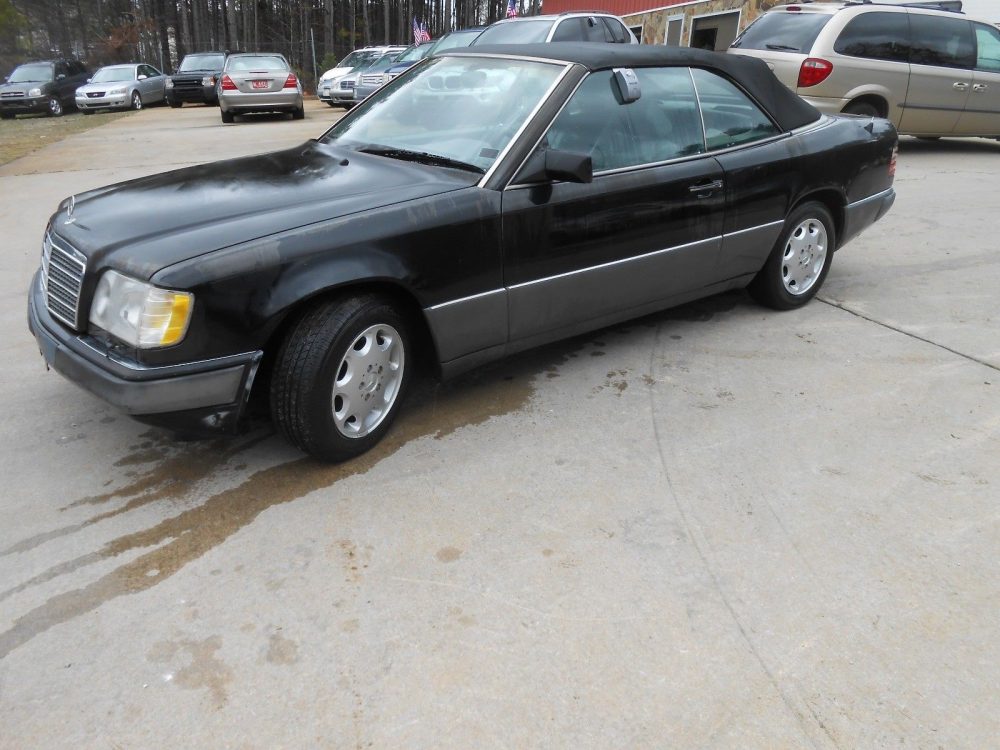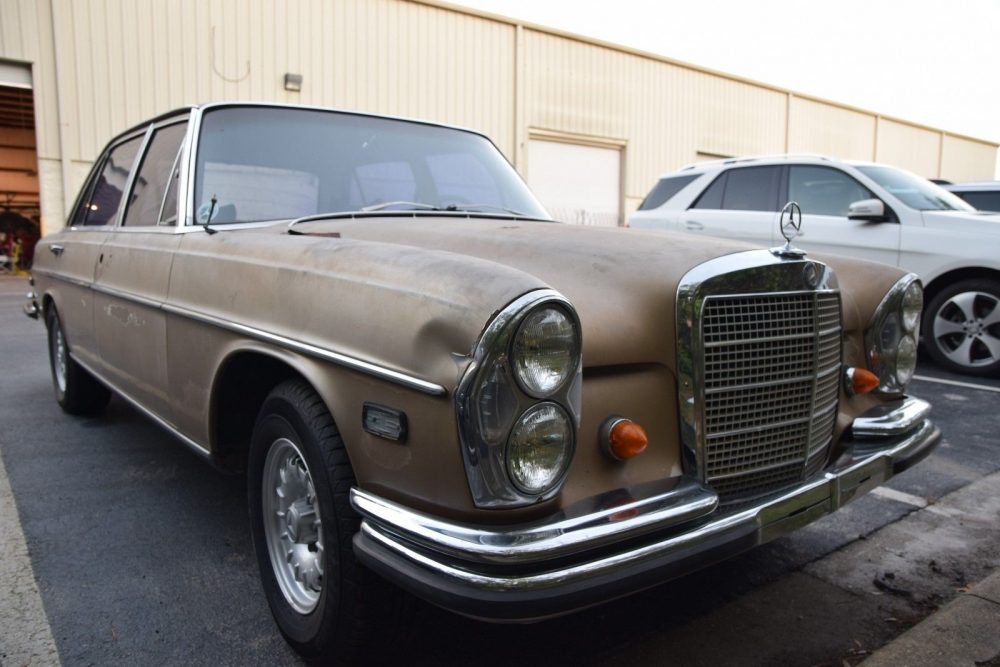Almost every Mercedes-Benz E320 Cabriolet I look at falls into the category of a really nice to exceptional example of one. This makes sense as a the W124 Cabriolet was an extremely expensive car when new in 1994 at $79,000 that equates to about $132,000 in today’s money. I told you these were really expensive. As a result and maybe even a little bit surprisingly, people took care of these cars if they held on to them past the normal three to five years from new ownership cycle that cars are usually subjected to. I’m sure that had a lot to do with the W124 Cabriolet not following the same deprecation curve as almost every other mass-produced post-war Mercedes in history that results in poor Craigslist postings and/or time spent at a BUY HERE PAY HERE car lot with four mismatched tires. Unfortunately, this 1994 up for sale in Georgia seems to have suffered that fate.
Tag: Roll the dice
Earlier this week I check out a handsome 1973 Mercedes-Benz 280SE 4.5 that looked to be a great driver and probably not a bad buy for the long run. Today, we have another W109 that has a little bit more risk attached to it. This of course is the king W109, the 300SEL 6.3. I’ve covered these many times before and every time I see one pop up for sale I always try to take a look at them. Unfortunately, this 6.3 needs a lot of help and even more money to make it worth it.
CLICK FOR DETAILS: 1969 Mercedes-Benz 300SEL 6.3 on eBay
3 CommentsBet big to win big, right? Today might be one of those situations. What we are looking at is a 1992 Mercedes-Benz 500E with a…
3 CommentsWith the burgeoning economic boom of the late 1950s (Adenauer’s ‘Economic Miracle’ in West Germany), many companies tried to capitalize on the success of the middle class by introducing swankier, more stylish versions of their economic models. The hope was that these cars would be expressions of wealth and signature models. To greater or lesser extent, the three that were developed around the same time – Volkswagen’s Karmann Ghia, BMW’s 700 Coupe and NSU’s Sport Prinz – were all relatively well received in the marketplace, though of the three only the Karmann Ghia had mass appeal. That was interesting, as the Sport Prinz offered a slightly different take on rakish Italian lines with pedestrian German underpinnings. Introduced for 1960, the Sport Prinz was built on the Prinz III chassis, a diminutive, air-cooled rear-engine inline-2 economy “sedan”. To take the Prinz upmarket, like Volkswagen NSU turned to Italy. Instead of Ghia or BMW’s choice of Michelotti, though, NSU enlisted famed Bertone in Turin and the designer Franco Scaglione. The resulting design was significantly more dramatic than the Prinz, with long overhands, a swoop roofline and tail fins hinting at greater GT speed. As with the others though, the Sport Prinz offered no performance gain, but at least came to market slightly under the price of the more famous Karmann Ghia, at around $2,400 – top for the NSU lineup in the early 1960s.
CLICK FOR DETAILS: 1965 NSU Sport Prinz on eBay
Comments closed“Hey, nice Corvair!” , they’ll shout out the window at you, “What, did you leave it in the drier too long?”
Most people I know seem to view me as some sort of idiot-savant, casually remembering which wheel styles were associated with what model, what colors various cars came in, engine specifications and call numbers – you get the point. But I have to admit to a huge gap in my automotive knowledge. Perhaps it’s a willful ignorance, but I’ll be damned if every single American car from the 1950s basically looks the same to me. I’ll take ‘Generically shaped cars for $1,000, Alex!’:
“What is Hudson!” (beeeeeep)
“What is a Studebaker?” (beeeeeep)
(more hesitant)
“Uh, what is Nash?” (beeeeeep)
Sure, like the rest of America who grew up before the year 1990, I can ID a 55 Chevy at a distance thanks to Don McLean’s insistence that you weren’t American if you couldn’t, but otherwise there’s this huge void of massive steel shapes that mean little to me.
What’s interesting is that I can so easily identify the differences between the Volkswagen 1500, the BMW 700, and the NSU Prinz. All were rear-engine, three-box sedans that were built at the same time. They all have a very, very similar shape. And yet, to me they’re as different as….well, a BMW and Volkswagen can be. NSUs are rare as the proverbial tooth of a hen here in the U.S., so is this forlorn 1200 worth a roll of the dice?








